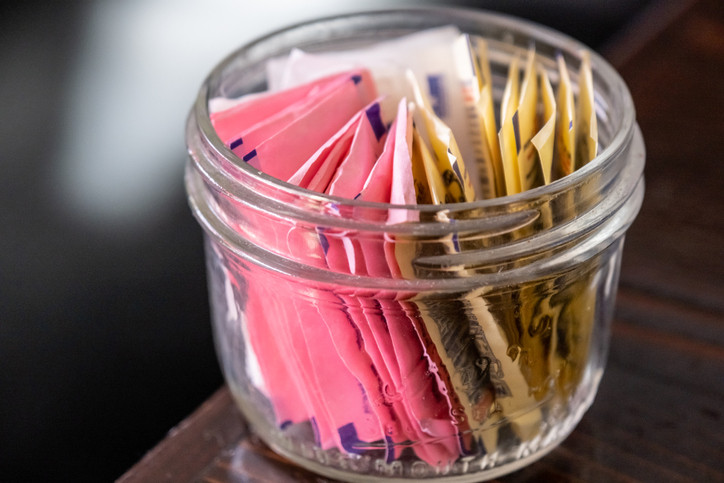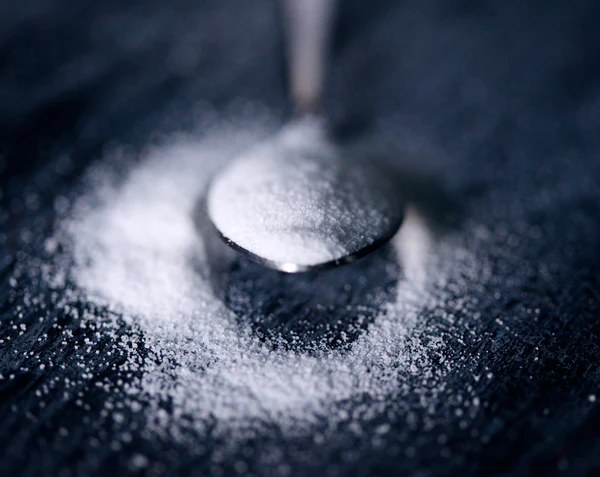Currently Empty: $0.00



- Saccharin — the oldest artificial sweetener; 300 times sweeter than table sugar; contained in many soft drinks, fruit drinks, gum, baked goods, and canned fruits
- Sucralose — aka Splenda; *the most commonly used artificial sweetener worldwide; roughly 600 times sweeter than sucrose; calorie-free (non-nutritive); contained in many diet drinks, tabletop sweeteners, baked goods, frozen desserts, juices, gum, and dairy
- Aspartame — contains calories (though, because of aspartame’s intense sweetness, we consume so little the calories are considered negligible); 200 times sweeter than table sugar; contained in tabletop sweeteners, chewing gum, instant coffee, puddings, and soft drinks
- Advantame — non-caloric artificial sweetener; 100 times sweeter than aspartame^ and 20,000 times sweeter than table sugar (yes, you read that right); used frequently as a flavor enhancer in dairy, fruit, citrus, and mint; also often an ingredient added to milk products, frozen dairy, beverages, and gum
- Acesulfame-potassium (sometimes listed as acesulfame-k) — 200 times sweeter than table sugar; used in many tabletop sweeteners, sodas, frozen desserts, bakery products, candies, chewing gum, dairy, syrups, soups, and sauces
- Neotame — a non-calorie sweetener; 7,000-13,000 times sweeter than sugar (GAH!); ingredient in beverages, baked goods, gelatines, chewing gum, and jams/jellies
Note that many products contain two or more artificial sweeteners — in fact, this is a very common strategy manufacturers use to minimize potential undesirable effects from any one given artificial sweetener (such as a bitter/unpleasant aftertaste) and enhance a product’s overall sweetness and performance on the market.
Truly — it can be VERY challenging to find products that don’t contain added sweeteners (or sugars)… especially if you are a busy parent.



